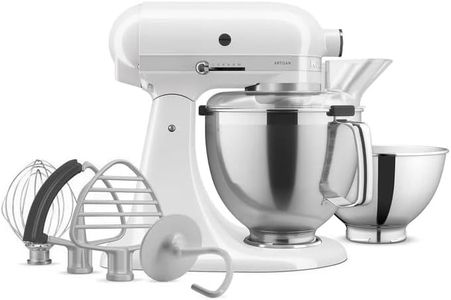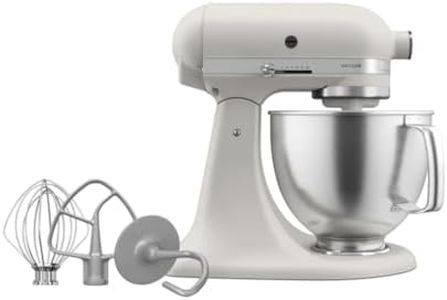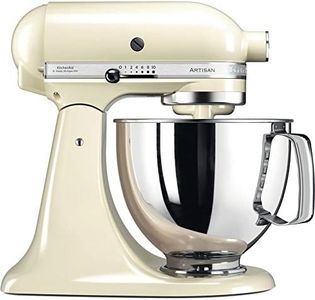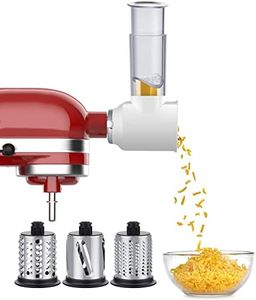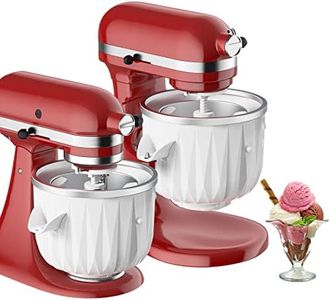We Use CookiesWe use cookies to enhance the security, performance,
functionality and for analytical and promotional activities. By continuing to browse this site you
are agreeing to our privacy policy
10 Best Kitchenaid Mixers
From leading brands and best sellers available on the web.Buying Guide for the Best Kitchenaid Mixers
When choosing a stand mixer, such as a KitchenAid mixer, it's important to focus on what you plan to use it for in your kitchen. While all mixers help with tasks like mixing, whipping, and kneading, the key is to think about your cooking habits—are you an occasional baker or a passionate bread-maker? Identifying your primary needs and considering how much you’ll use the machine will guide you toward the right features and size. Understanding the key specifications will help you avoid buying a mixer that’s more powerful than you need, or one that feels limiting as you experiment with more recipes.CapacityCapacity refers to the size of the mixing bowl and indicates how much dough or batter you can prepare at once. This is usually measured in quarts or liters. Smaller bowls (about 3–4 quarts) are great for making cookies or cakes occasionally, while larger bowls (5–7 quarts or more) are better if you often bake in bigger batches or prepare heavy doughs like bread. To choose the right capacity, think about how many people you cook for and how large your typical recipes are. If you bake primarily for yourself or a small family, a smaller bowl should be sufficient. For larger families or anyone who likes to batch-cook or entertain, a larger capacity makes sense.
PowerPower is measured in watts or sometimes described as motor strength. This determines how well the mixer handles thick or heavy mixtures, such as bread dough. Lower-powered mixers work well for lighter tasks like whipping cream and mixing cake batter, while more powerful motors can manage dense doughs and larger quantities without struggling. Consider what ingredients you’ll be mixing most often; bread bakers will benefit from a more powerful mixer, while casual users can get by with less power.
Speed SettingsSpeed settings allow you to control how fast the mixer works, typically ranging from slow stirring to very fast whipping. More speed options give you better control for different tasks, such as gently folding ingredients or whipping egg whites quickly. If you experiment with various recipes or techniques, having several speed levels can be helpful. For simple baking needs, basic low-to-high settings will suffice.
Attachments and AccessoriesMixers often come with a few standard attachments, like a beater, dough hook, and whisk. Some models offer the ability to add extra attachments for pasta-making, grinding meat, or spiralizing vegetables, transforming the mixer into a multi-purpose kitchen tool. If you value versatility or plan to try new recipes, consider what attachments are available for your mixer and if they can be purchased separately. For straightforward mixing and baking, the standard attachments will be enough.
Weight and SizeThe weight and size of a mixer affect how easy it is to move and store. Heavier mixers are more stable and can stay on your countertop, but can be hard to lift and store away. Lighter models are easier to move but may shift around during use. Consider your kitchen space and whether you'll keep the mixer out or need to put it away between uses. If you have limited counter space or storage, a more compact mixer may be a better fit.
Ease of CleaningEase of cleaning matters because mixers can be messy. Look for a design with dishwasher-safe parts or simple-to-wipe surfaces. Removable bowls and attachments make cleaning up quicker, especially if you use the mixer often. If you value convenience and speed in the kitchen, prioritize a mixer that is easy to take apart and clean.
